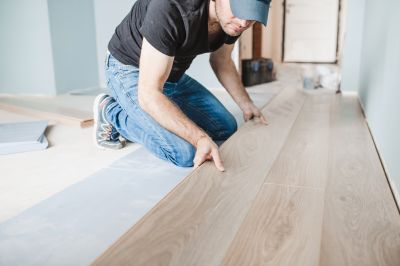Ultimate Guide to Top Products For Rubber Floor Installations
Learn about the essential products that ensure a durable, professional-looking rubber flooring setup from start to finish.
 Installing rubber flooring can be an effective way to enhance safety, comfort, and durability in various spaces such as gyms, garages, commercial areas, and playrooms. The versatility of rubber flooring allows it to be used in both residential and commercial settings, providing a resilient surface that absorbs impact and reduces noise. When selecting products for rubber floor installation, it is important to consider the specific needs of the space, including load capacity, slip resistance, and ease of maintenance.
Installing rubber flooring can be an effective way to enhance safety, comfort, and durability in various spaces such as gyms, garages, commercial areas, and playrooms. The versatility of rubber flooring allows it to be used in both residential and commercial settings, providing a resilient surface that absorbs impact and reduces noise. When selecting products for rubber floor installation, it is important to consider the specific needs of the space, including load capacity, slip resistance, and ease of maintenance.
Top Overall Option
Rubber Flooring Tiles
Rubber flooring tiles are a versatile and user-friendly option for many installation scenarios. They are available in various thicknesses, textures, and colors, allowing for customization to suit different aesthetic and functional requirements. Tiles are easy to install, often using interlocking mechanisms or adhesives, making them suitable for DIY projects. They can be replaced individually if damaged, providing a practical solution for maintaining a safe and durable surface. Rubber tiles also offer good impact absorption and slip resistance, contributing to a safer environment in high-traffic or active areas.
Types of Products For Rubber Floor Installations
Rubber Floor Tiles
Interlocking or adhesive-backed tiles designed for quick installation and easy replacement.
Rubber Floor Rolls
Continuous sheets that provide seamless coverage for large areas with minimal joints.
Rubber Mats
Portable mats suitable for specific zones or equipment areas, often with textured surfaces.
Interlocking Rubber Tiles
Puzzle-like tiles that snap together for a customizable and secure fit.
Rubber Floor Coatings
Liquid coatings that can be applied directly to concrete or existing flooring for a durable rubber-like surface.
Rubber Underlayments
Underlayment products used beneath other flooring types to provide cushioning and sound insulation.
Recycled Rubber Flooring
Eco-conscious options made from recycled rubber materials, suitable for various installation needs.
Rubber Stair Treads
Durable treads designed to improve safety on staircases with rubber surfaces.
Rubber Baseboards
Flexible rubber trim pieces that protect walls and provide a finished look.
Rubber Edge Strips
Border pieces that create clean edges and transitions between different flooring types.
Popular Choices
Widely used for their ease of installation and variety of styles.
Preferred for large commercial or gym spaces due to seamless coverage.
Commonly chosen for workout areas and industrial settings.
Popular for customizable and portable flooring solutions.
Increasingly favored for environmentally conscious projects.
Selected for safety and durability on staircases.
Used for finishing edges and protecting walls.
Chosen for clean transitions and border finishing.
Applied for seamless and protective surface layers.
Used beneath other flooring to enhance comfort and soundproofing.
Rubber flooring products come in many forms including tiles, rolls, mats, and interlocking systems. Tiles are popular for their ease of installation and ability to be replaced individually if damaged. Rolls provide seamless coverage for larger areas and create a uniform look. Mats and interlocking tiles are often favored for their portability and customization options. Each type offers unique benefits and considerations depending on the application, budget, and aesthetic preferences.
Durability and safety are key factors in choosing the right rubber flooring products. High-quality rubber surfaces can withstand heavy foot traffic, equipment weight, and environmental wear without deteriorating quickly. Additionally, slip-resistant textures and cushioning properties contribute to a safer environment, especially in spaces prone to moisture or spills. Proper installation techniques are crucial to ensure longevity and performance, including surface preparation and appropriate adhesive use.
Maintenance requirements also vary among different rubber flooring products. Some options are designed for easy cleaning with simple sweeping or mopping, while others may require specific cleaning agents to preserve their appearance and functionality. Consulting product specifications and installation instructions can help ensure that the chosen flooring will meet ongoing maintenance needs and deliver consistent performance over time.
Key Buying Considerations
- Determine the intended use and load requirements of the space.
- Choose the appropriate thickness for impact absorption and durability.
- Consider the installation method—whether DIY or professional installation is preferred.
- Assess slip resistance features suitable for the environment, especially in wet areas.
- Evaluate the ease of cleaning and maintenance routines for the product.
- Select a product that offers adequate cushioning for comfort and safety.
- Review compatibility with existing flooring or surface preparation needs.
- Check for available sizes and customization options to fit your space.
- Consider the environmental conditions such as moisture levels or temperature variations.
- Ensure the product meets safety standards relevant to your region or industry.
- Compare adhesive or interlocking systems for ease of installation and future adjustments.
- Look into the availability of replacement tiles or sections for easy repairs.
- Analyze cost versus longevity to find a balance that fits your budget.
- Verify the product’s compatibility with heavy equipment or high traffic scenarios.
- Review customer feedback and product ratings for insights into performance and satisfaction.
